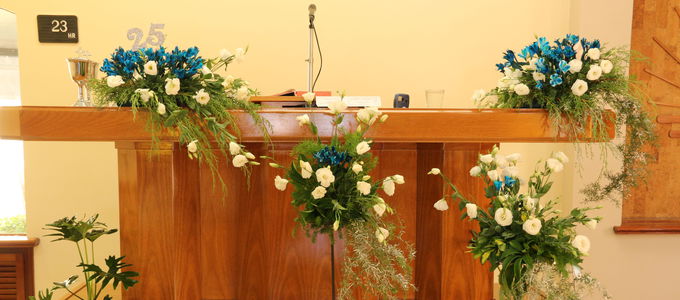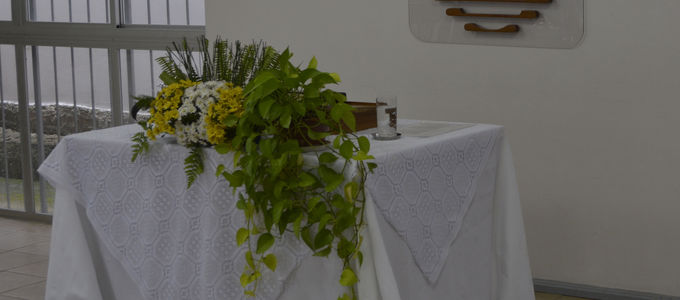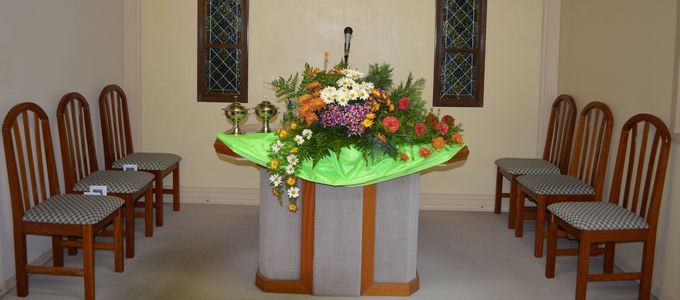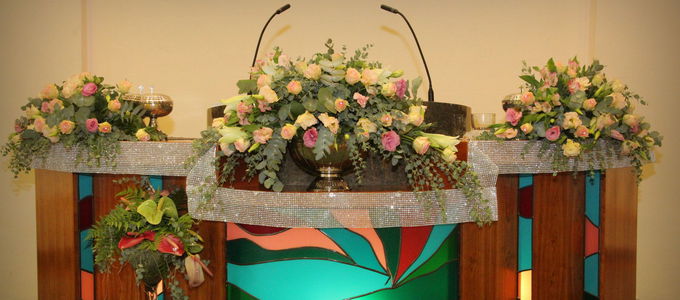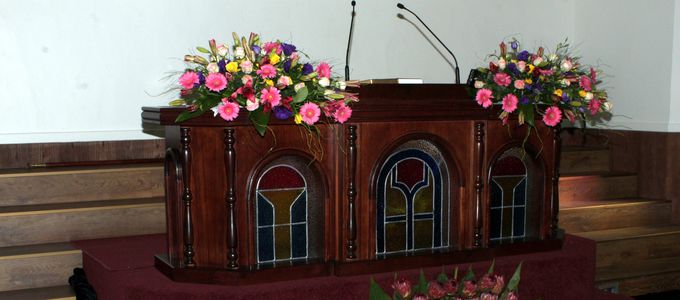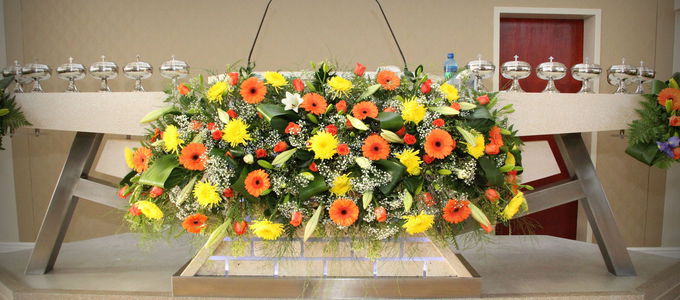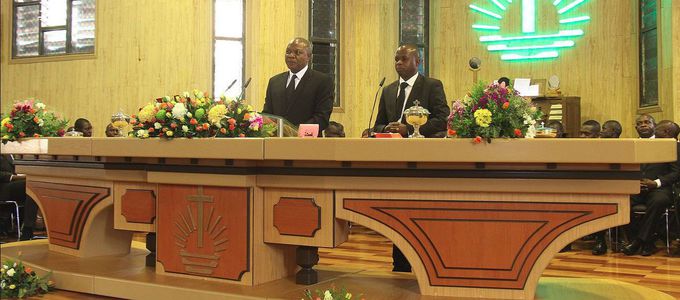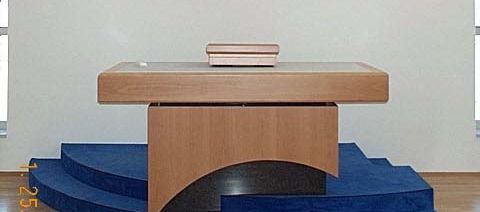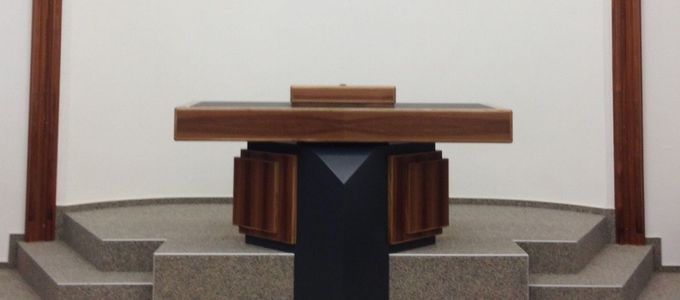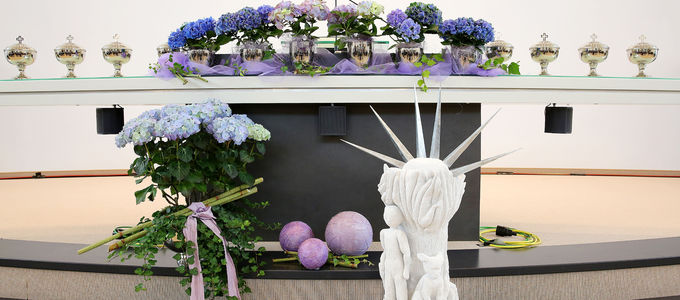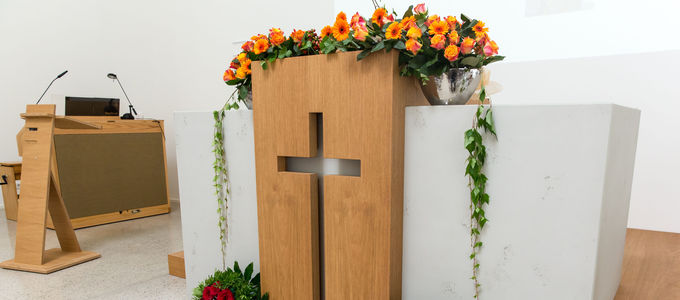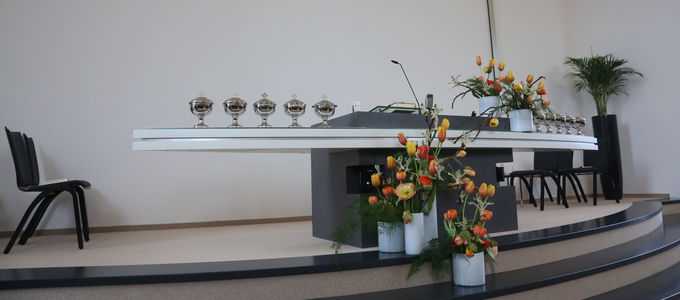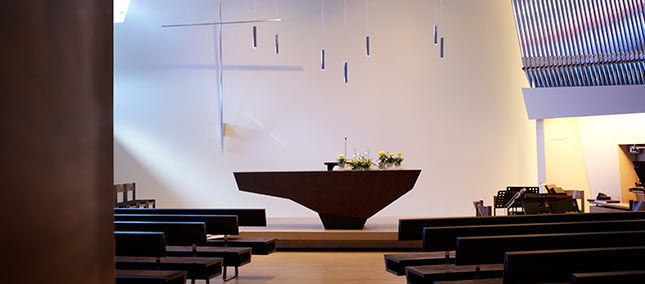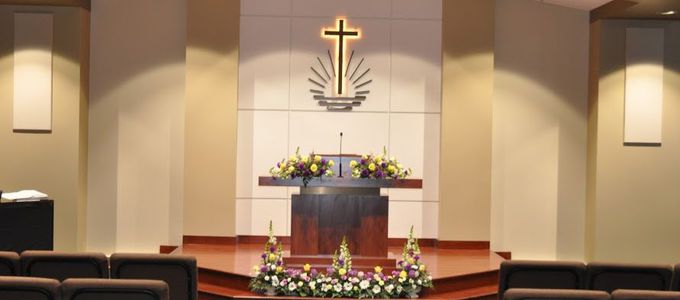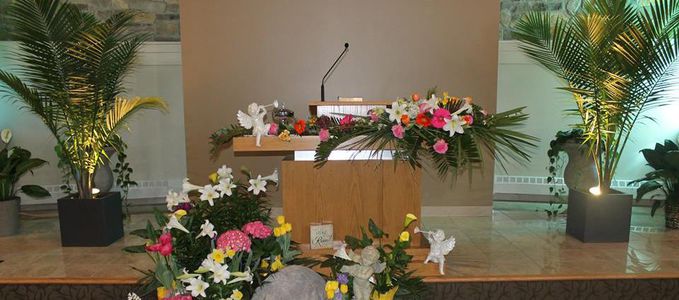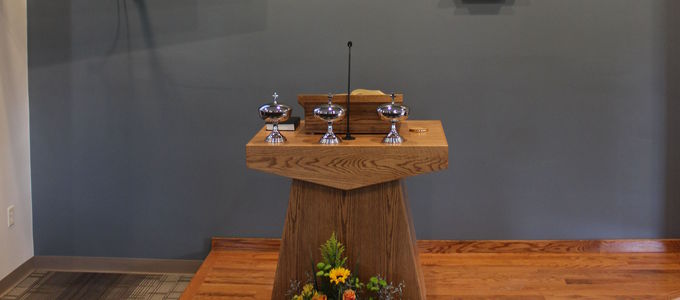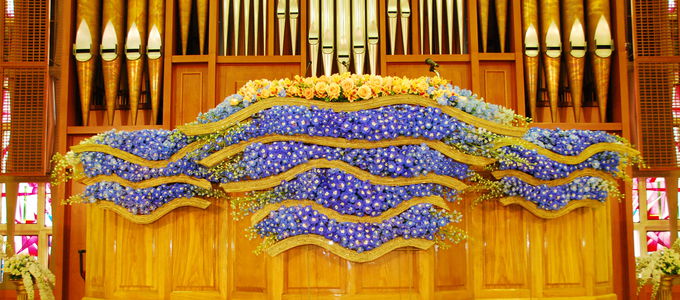
The organ starts to play, the Priest walks to the front, and steps behind the altar. The altar is built on a platform, behind which the cross has been mounted. The altar is the place where God is worshipped, where we remember the sacrifice of Jesus, and where the minister stands to preach. The altar is also referred to as mensa domini, the table of the Lord.
This is how divine services in many Christian congregations begin—a picture we are all familiar with. Central to the fixed liturgy is the celebration of Holy Communion. That is another reason why the altar is the meeting-point between God and the congregation. The congregation comes forward to receive the consecrated wafer. The object of this orderly communion procession is once again the altar. This is where bread and wine is consecrated so that the body and blood of Christ is really present. There, at the place of the holy activity of God, the faithful will receive the host.
The table of the Lord
The altar is a fundamental part of worship in many Christian congregations and occupies a prominent place. Whether the altar is made of wood or stone, it remains a table. While there are many different architectural designs, the table of the Lord (1 Corinthians 10: 21) is to be a reminder of the Last Supper, which Jesus ate with His disciples. This eating together at the same table made them into a table fellowship. It is to be exactly the same today. In many churches the altar as well as the space that surrounds it is sacred. The faithful may approach the altar but within certain limits. In large churches, the altar is cordoned off with a rope. This is where the consecrated minister, the Priest, stands to sacrifice and preach. In Orthodox churches the altar is completely concealed from the congregation. Here it is the sanctuary, which only the Priest may enter.
Altar for sacrifice and preaching
In the temple in Jerusalem there was an altar for both incense and other offerings—of magnificent beauty. With the sacrificial death of Christ, however, these ritual sacrifices lost their meaning. For many Christians the altar is the place where they encounter Jesus. In the New Apostolic Church the altar is both a sacrificial altar as well as one for preaching. That is why there is a slightly raised structure on the altar, a lectern. This is an indication of the two-fold use. The sermon prepares the way for the sacrament. The sacrament is central to the divine services. Both take place at the altar. The Priest is an instrument of God at a sanctified place: he proclaims the word of God and dispenses the body and blood of the Lord. In other churches there are either several altars or a communion table and a separate pulpit. In Catholic churches there are typically two altars: a lavishly decorated high altar and a people’s altar, where the Priests are active. In those denominations that consider communion more of a symbol that signifies the presence of Jesus, the pulpit is the focus of the church.
Since the liturgical reform in the New Apostolic Church we have been using an ambo, a reading desk, for our Bible readings on religious festivals. Most often this is done using a lectern.
A holy place
“Genesis 8 tells of the first altar built by man in order to serve God, worship Him, bring thanks to Him, and bring sacrifices to Him. Noah erected an altar and brought God an offering of thanks. The Lord responded with the promise that He would henceforth protect the creation,” it says in chapter 12.1.2 of the Catechism. God gave Moses exact instructions on how to build an altar.
The altar has always been a holy place.






